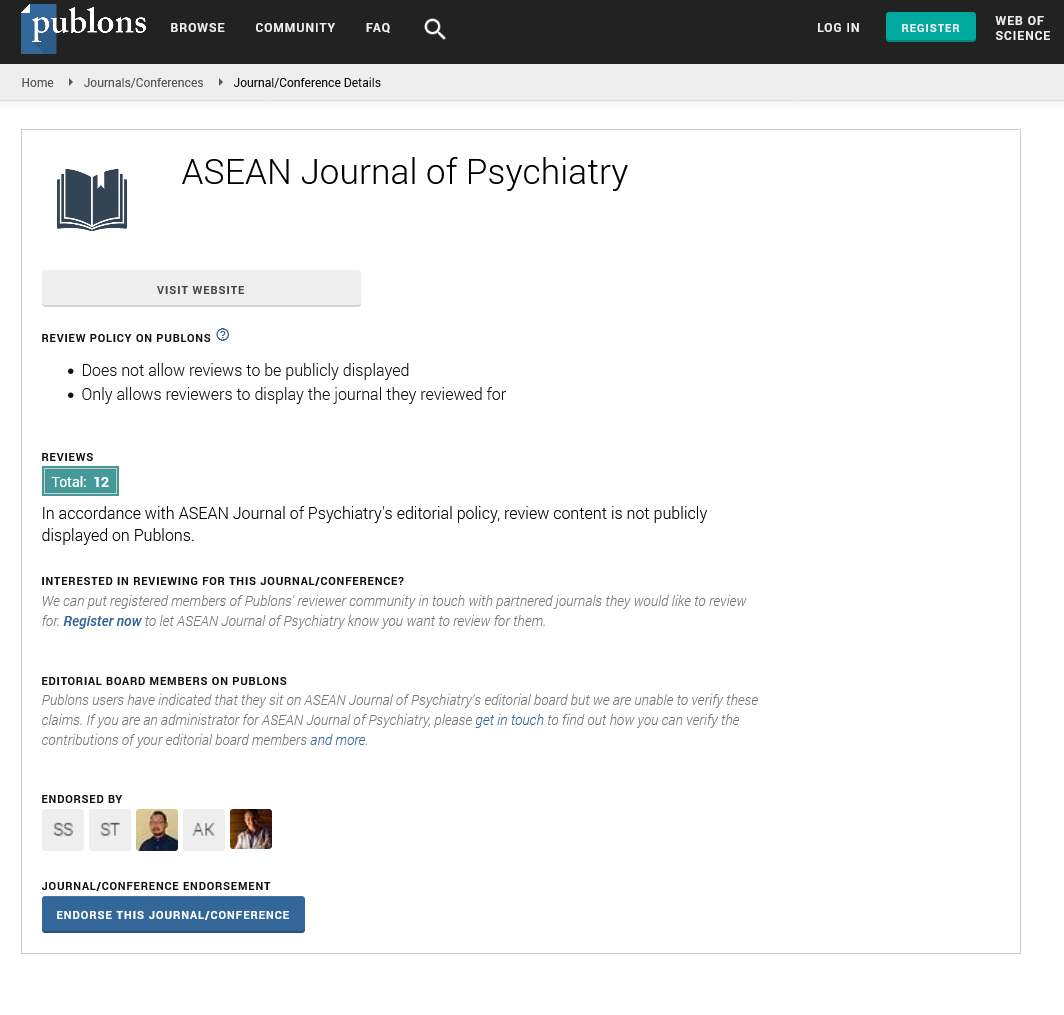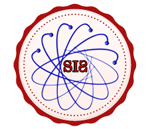Introduction
DID has its origins in the pioneering work of the
physician and psychologist Pierre Janet (1859-
1947), who put forward the notion of
"dissociation of ideas and functions". This new
concept was reworked a century later by O. van
der Hart and his colleagues, who proposed the
notion of "structural dissociation of personality"
between at least two fragments with a sense of
self: the ANP and the EP.
Functional dissociation of personality is a new
concept that we would like to introduce here, at
the interface of DID and structural dissociation.
This new diagnostic category provides very
useful clinical details in psychotherapy practice
because its prevalence is significant. Functional
dissociation allows the clinician to produce a
differential diagnosis with DID, which paves the
way for a more appropriate treatment than DID
for patients without structural dissociation of the
personality.
Literature Review
The origins of DID: The dissociation of pierre
janet
In the 18th century in Europe, the strange
manipulations of F.A. Mesmer left no one
indifferent, especially in France where he came
to practice. Soon, in Paris, but also in the
provinces, doctors or simply curious people tried
to reproduce the same effects on their relatives or
patients. This period saw a great development of
hypnosis, and its therapeutic properties were
soon discovered. An additional progress was
made when doctors like Deleuze made the
connection between magnetic trances and the
symptoms of hysteria, the disease of the century
that no one could yet explain
While mesmerism or hypnosis sessions
flourished in all regions, a revolution took place
in people's minds when J.M. Charcot, the great
neurologist of the Salpêtrière (Paris, France),
reproduced these experiments himself and succeeded in demonstrating that the trances of
his hysterical patients were due to "ideas": at that
moment, the parisian Academy of Sciences
decided to take an interest in the link between
hysteria and hypnosis.
It was in this atmosphere of enthusiasm for these
new discoveries that the career of a young
professor of philosophy, Pierre Janet, began. He
volunteered to treat hysterical patients at the
hospital in Le Havre (Normandy, France) and
was the first to understand the relationship
between hysterical attacks and hypnosis.
According to him, hysterical and highly
hypnotizable patients suffer from a dissociation
of ideas and functions. More importantly, this
dissociation is of traumatic origin. This
fundamental discovery was published in his
doctoral thesis in psychology, Psychological
Automatism (recently translated into English).
In this work (and several earlier research articles)
Janet (1889) explains for the first time that
violent emotions, unbearable events, have the
power to split the personality into two parts, a
part that remains apparently normal (though
depressed), and a part that is not accessible to
consciousness, which contains the traumatic
event and all its psycho-sensory-motor
characteristics, also possessing the memory of
the event [1]. This memory was thus recorded,
but by detaching itself from the ego and from the
individual's normal memory, it became
subconscious (Janet coined the term).
The model created by Pierre Janet allowed him
to explain, by grouping them together, numerous
pathologies and behaviors that clinicians had not
seen before him, such as: catalepsy,
somnambulism, hysteria, automatic writing and
speech, the behavior of mediums and spiritists.
According to him, these manifestations can be
explained by the intrusion into the subject's
consciousness of dissociated parts of his
personality: he will give more details in his
doctoral thesis [2].
In formulating the modern model of traumatic
dissociation, Janet also indicated a treatment
aimed at reunifying the dissociated personality.
This treatment would become the gold standard of DID treatment a century later [3]: the threephase
treatment, stabilization, reduction of
traumatic memories, strengthening of the
personality. Another major advance brought by
the great clinician is to have explained hypnosis:
according to him, this practice allows access to
the traumatic memories of the patients, so that
they can be reduced and above all, reintegrated
into the normal personality and personal
biography of the subjects. It follows that once the
personality has been reconstituted, patients cease
to be hypnotizable: it should be noted that since
Janet, this definition of hypnosis is no longer
widely used.
Schizophrenia, the dissociative continuum, and
new critiques
Bleuler's schizophrenia and the dissociative
continuum: In 1903-1904, E. Jung, who had just
graduated from medical school, came to attend
Janet's classes at the Collège de France and
became very interested in the mechanism of
dissociation, namely a failure of the subject's
capacity for synthesis. He called this process a
"loosening of associations". Back at the
Burghölzli clinic, under the direction of E.
Bleuler, the two doctors elaborated together a
new vision of Kraeplin's dementia praecox. In
his 1911 work, Bleuler defined schizophrenia as
a disorder originating in a loosening of
associations leading to a "Spaltung", which
translators would eventually associate with
Janet's dissociation [4,5].
The "dissociation" at work in schizophrenia met
with worldwide success, and the entire
international clinic soon adopted this new
nosographic entity: Schizophrenia became the
most studied psychiatric pathology of the 2h
century, on all continents. However, the success
of this model was at the expense of the
dissociation of what Jung had already called "the
French school": little by little, Janet's
"dissociation of ideas and functions" was
forgotten (even in his own country), and, as A.
Moskowitz reminds us in 2005, the very term
dissociation became irremediably associated
with the schizophrenic process.
It was not until the 1960s and 1970s that
psychology researchers took a renewed interest
in the mechanism of dissociation. Researchers
such as Spiegel and especially Hilgard proposed
a new model of dissociation independent of
schizophrenic disorders [6,7]. Hilgard called his
theory neo-dissociation. According to this new
approach, dissociation is a state of modified
consciousness that takes place on a continuum
that goes from normal to pathological. Altered
states of consciousness such as absorption or
day-dreaming are manifestations of normal,
everyday dissociation, while the most intense
cases can be considered pathological, such as
dissociative fugue or, of course, multiple
personalities.
It is by considering these innovative works that
the main manual of world psychopathology, the
DSM (Diagnostic and Statistical Manual) of the
American Psychiatry Association, decided in
1980 to integrate dissociative troubles, of which
the most representative at the time is the MPD
(Multiple Personalities Disorder). Due to poor
training of clinicians in this new disorder, it was
renamed DID (Dissociative Identity Disorder) in
1994 in the DSM-IV version. Thus, the DSM
nosography gives credit to the work of Pierre
Janet, but without citing him. It should also be
noted that for Janet, dissociation is traumatic in
nature and does not exist in a "normal", nonpathological
form.
Critics of neo-dissociation: The introduction of
dissociative disorders in the DSM-III and their
revision in the DSM-IV brought the concept of
dissociation out of decades of neglect. Indeed,
these publications encouraged hundreds of
clinicians around the world to engage in research
on dissociation and dissociative troubles.
However, several authors were quick to note the
limitations of the new definition [7]. One of
these limitations is, for example, the
identification of depersonalization and
derealization as dissociative symptoms. As van
der Hart and Dorahy note, these two concepts
were also created by Pierre Janet, the author of
the modern formulation of the concept of
dissociation [8]. It turns out that for Janet,
depersonalization and derealization are characteristic of depression, especially its severe
forms with doubts, obsessions or compulsions.
For these authors, the two symptoms should
therefore be excluded from the dissociative
picture.
This is why van der Hart, Steele and Nijenhuis
produced a reference manual in 2006, The
Haunted self, proposing a new vision of
dissociation based on the early work of Pierre
Janet: Structural Dissociation of the Personality
(SDP). In this scheme, which has since been
confirmed by functional brain imaging studies, a
traumatic shock produces a fragmentation of the
personality into two or more dissociated parts of
the self. Primary dissociation produces an
Apparently Normal Part of the personality
(ANP) and an Emotional Part of the personality
(EP), secondary dissociation produces one ANP
and several EPs, and finally tertiary dissociation
produces several ANPs and EPs. Each Emotional
Part (EP) has its own sense of self, is
inaccessible to the subject's normal
consciousness, and is amnesiac of the other
dissociated parts. According to the authors, the
dissociative disorder thus defined encompasses
not only DID, but also PTSD and other disorders
of traumatic origin.
Structural Dissociation (SDP) is therefore a very
serious disorder, with many comorbidities. The
treatment recommended by the authors is also
based on the work of Janet and describes the
same three phases (stabilization, reduction of
traumatic memories, reinforcement of the
personality), while providing more practical
details. Of course, the therapeutic arsenal may
also include effective psychotropic medications,
which Janet was not aware. Overall, the DID
disorder currently categorized in the DSM-V
corresponds well to the structural dissociation of
van der Hart and colleagues, with the exception
of the depersonalization/derealization symptoms,
which are considered non-specific by these
authors
For example, the presence of several alternating
personalities is sometimes known by patients,
and often reported by their relatives. The same is
true for amnesia, which the patient generally ends up noticing, for example when he finds his
belongings in a place where he has no memory
of having put them himself. A very old disorder
also illustrates, quite well, the convergence
between the SDP model and the DSM diagnostic
categories, namely dissociative fugue: the patient
suddenly finds himself in a place (possibly very
far from home), without knowing how he got
there. The dissociative fugue thus illustrates the
switch between ANP and EP or between several
amnesic EPs.
One problem: did patients are not just any
patients
The severity of dissociative disorders such as
DID or D-PTSD (PTSD of a dissociative nature
introduced to the DSM-V in 2013) poses many
challenges for identification and diagnosis [8,9].
Indeed, as the dissociated parts are amnesiac of
each other, many times the patients themselves
are unaware of what they are suffering from, and
more often report other more common disorders.
Depression, suicide attempts, phobias, insomnia,
persistent pain or eating disorders remain the
main causes of consultation for dissociative
patients. It is therefore the practitioner's
responsibility to detect the dissociative disorder
beyond the patient's testimony, which is not
easy. Most often, it is by comparing the patient's
testimony with that of his or her relatives that the
diagnosis can be inferred. In particular, the
switch between ANP and PE or between multiple
PEs is extremely difficult to observe in the
consulting room [10]. This is because switches
occur in the presence of specific triggers related
to the subject's trauma, and these triggers are
rarely present in the quiet, small office setting.
According to some authors, patients consult
mainly for distressing intrusions that alter their
quality of life [11]. However, according to these
studies, these unpleasant intrusions are tens of
times more frequent than switches between
dissociated parts of the personality.
It follows from these observational difficulties
that cases of DID are primarily diagnosed in the
hospital, and in a contingent manner. Panic
attacks, violent outbursts, fugues with amnesia,
or suicide attempts, for example, usually bring patients to the hospital for diagnosis and
observation. Once DID or D-PTSD is diagnosed,
these patients are followed in the day hospital
and usually receive medication to help stabilize
their condition: community practitioners do not
see them again, or only at the end of their
hospital follow-up. As a result of these
situations, no more than 1.5% of patients in the
city have DID or D-PTSD [12], whereas nearly
10% of them have DID or D-PTSD in medical
facilities [13].
And yet, city offices are often visited by patients
with symptoms apparently very close to
structural dissociation. Thus, among the
symptoms most often reported in the office,
patients mention being divided, feeling torn
between several parts of their personality, and
even hearing an inner voice, either desired (as an
advisor, for example) or - more often - unwanted
(negative or threatening intrusion). An extremely
important clue is that in all these frequent cases,
the patient is fully aware of his or her divisions.
He is the first to know the different parts of his
personality, and the incompatible demands they
make on him on a daily basis: rare are the cases
of pathological amnesia, and the possible
memory disorders observed remain within the
range of normality. Today, these patients are
poorly diagnosed and often undergo various
treatments (psychological or drug) for many
years, with no results. This is why it seemed
interesting to us to relate these numerous clinical
cases to a new diagnostic category, functional
dissociation.
Functional dissociation: approach and origins
Symptomatology of functional dissociation:
Several decades of practice in urban
psychotherapy have taught us that many patients
could be grouped together by the similarity and
frequency of their characteristic symptoms: a
functional dissociation. This new diagnostic
category, based on field experience and long
practice, would help both patients to better
recognize their disorders and practitioners to
better identify them in order to propose the most
appropriate treatment [14]. Functional dissociation can present itself with these
characteristics:
1. Functional dissociation presents the
same symptoms as structural
dissociation: the patient feels
fragmented, dissociated, and
experiences several personality states
all in conflict with each other,
2. During a functional dissociation, the
ANPs and EPs remain conscious of each
other, and no amnesia is observed
between them,
3. Functional dissociation can be treated in
the same way as structural dissociation
(three-phase treatment), but more rapid
treatments also exist.
Fragmentation of the ego, consciousness, or
personality is indeed the symptom most often
witnessed by patients in the city [15]. The patient
painfully experiences these internal divisions,
these contradictory tendencies, and is unable to
resolve them alone. Their entire daily life is
affected by this and, very often, it is impossible
for them to make up their mind: they live for
months or even years in indecision, doubt or
ruminations. Of course, this functional
fragmentation of the personality is most often
accompanied by depression and other common
disorders (insomnia, phobias, anxiety.): cognitive
and behavioral disorders generally accompany
functional dissociation.
The clinical picture is thus one of great suffering,
not only psychological but often also
physical/physiological, because the somatic
symptoms are numerous (especially pain, but
also motor, respiratory, dermatological and
digestive disorders). It should be noted that
because of the symptomatological proximity
between structural and functional dissociation,
the distinctions made by Van der Hart and his
colleagues remain relevant, and the disorders can
therefore be classified as psychoform and
somatoform, positive and negative (Van der Hart
et al., 1989). However, to avoid confusion, it will
be preferable to speak of f-ANP and f-EP for the
dissociated parts in a functional dissociation (rather than ANP and EP, as in a structural
dissociation).
A pathology rooted in history: If functional
dissociation is a pathology that is very
characteristic of the beginning of the 21st century, where everything goes faster and faster,
requiring individuals to adapt extremely quickly,
it has analogies with disorders already identified
at the beginning of the 20th century. In addition
to being the father of modern dissociation, Pierre
Janet had also conceptualized the notion of
psychastenia. Similar to our current depression,
Janet's psychastenia shares many properties with
functional dissociation. Obsessions, doubts and
ruminations are obviously part of it. Thus, the
clinical picture is very similar, but one
characteristic distinguishes them: for Janet,
psychasthenia is a severe disorder with a mostly
negative prognosis [16]. Among his clinical
cases, the great practitioner shows that few
patients manage to recover their health
permanently. Most of them are forced to remain
under observation for the rest of their lives, and
have to return to the clinician regularly (from a
few months to a few years). For Janet, this
fatality could have several causes, including
family heredity, a serious previous illness,
persistent life difficulties, or as he liked to recall
the inadequacy of the therapeutic approaches of
his time.
The prognosis of functional dissociation is quite
different: on the contrary, this pathology can be
completely cured, sometimes in only a few
sessions. How can this difference be explained?
It goes without saying that the two nosographies
are not absolutely identical: if doubts and
ruminations are often part of the clinical picture,
let us remember that the main property of
functional dissociation is this fragmentation of
the personality, this unbearable dissociation that
patients complain about. Thus, identifying the
patient's f-ANP and f-EP from the very first
session allows the treatment to be drastically
optimized. By making the right diagnosis, the
clinician allows the treatment to be faster and
more effective. Furthermore, the mobilization of
several therapeutic tools that did not yet exist in Janet's time obviously contributes to the success
of the treatment.
The presence of dissociations at the heart of the
personality had also been identified by a great
theorist of human sciences: Gregory Bateson. At
the end of the 1950s, the famous anthropologist,
leader of the Palo Alto School, undertook to
model Bleuler's schizophrenia using concepts
from the world of communication (then just
emerging). Surrounded by the first computer
scientists and several psychiatrists, he
conceptualized the notion of "double-bind" [17].
For him, dissociation or schizophrenia, therefore
it can be explained by the fact that the child
receives contradictory messages from his
parents. For example, a father or mother
constantly demands affection, but physically
rejects the child when she/he approaches. The
notion of double bind has many analogies with
functional dissociation, as f-ANP and f-EP
closely embody the paradoxical injunctions
highlighted by Bateson and his colleagues. It
differs, however, in one major aspect.
The main difference between Bateson's double
bind and functional dissociation lies in the fact
that a large number of patients present more than
two dissociated parts. While some clinical cases
have only one f-ANP and one f-EP, more often
patients have several f-EPs. All these dissociated
parts emit contradictory and incompatible
signals. Often embodied by imaginary characters
or by relatives from the patient's childhood, these
functionally dissociated parts make daily life
unbearable for the subjects by demanding
behaviors that are impossible to reconcile.
Bateson's double-bind has not had the posterity it
deserved in the psychiatric field: one reason is
perhaps this limitation to two paradoxical
injunctions. Why not three, four, or more? In
reality, our long clinical experience tells us that
contradictory messages are often more numerous
than two, which is why, within the functional
dissociation model, we propose to integrate the
notion of double bind (Bateson), but also triplebind,
quadruple-bind and finally n-uple-bind.
These multiple constraints perfectly illustrate the
functional dissociation of patients into as many f-
EPs as insurmountable paradoxical injunctions.
Treatment approach for functional dissociation
The symptoms of functional dissociation touch
on the cognitive, behavioral and social spheres,
and generally integrate numerous sensorimotor
or somatic manifestations in the broad sense.
This is why the treatment offered to patients
must itself include all the therapeutic facets
likely to respond to these complex problems
[18]. Historical therapies, which were based
primarily on speech, have already demonstrated
their limitations in cases of traumatic
dissociation such as DID or D-PTDS. Similarly,
their relevance remains modest in cases of
functional dissociation: indeed, most patients
already have a long history of drug or
psychotherapeutic attempts that have ended in
repeated failure. From this point of view, the
most suitable approach is a semi-verbal or nonverbal
approach, based fundamentally on the
relationship between the body (and the brain)
and the mind.
Previous work Mayer has allowed us to present
the TICE© (Integrative Mind-Body Therapy), an
approach that has been developed and completed
over the past several years, the result of a long
practices [15]. TICE© is part of the integrative
psychotherapies that mobilize deep physiology
and neurology to act directly at the source of the
problems. Several studies have shown that
similar approaches, such as EMDR, Brain
spotting, or CBT, bring significant relief to
patients. This type of approach is called bottomup
because of its anchoring in the patient's
neurophysiology: by allowing direct access to
the subcortical areas of the brain, the seat of
emotions and traumatic memories, an integrative
mind-body approach is the most suitable tool for
treating functional dissociation in depth. New
developments in the TICE©, which has already
been validated for a long time, already allow us
to think that, more specifically, a limbic focus
therapy, or limbic therapy, is particularly
indicated for the treatment of dissociative
disorders, and in particular of functional
dissociation. Integrative therapies with a
neurophysiological approach, of which the
TICE© and limbic therapy are part, have the
particularity of preserving the patient's total freedom: being non-verbal (or semi-verbal), they
do not induce any suggestion, and allow the
patient to freely choose his or her own path to
recovery. This "hypnosis without hypnosis," as I
have previously called it Mayer [16], brings out
the f-EPs from the first session. The f-EPs are
stuck in the trauma past and unable to extract
themselves from it: by identifying the
neurophysiological states associated with each of
them, an integrative therapy (and in particular
TICE© and limbic therapy), has the immediate
effect of releasing the energy trapped in the past
and making it available to the patient to relearn
how to live again without anxiety, pain and
insurmountable doubt [17,18].
Functional dissociation is often based on a faulty
relationship with the past: during the practical
sessions, the patient is invited to feel the parts of
his or her body that are related to his or her
physical or psychological suffering, within a
benevolent and protective alliance. Focusing on
the here and now mobilizes the autonomic
nervous system and creates an opening to move
beyond the traumatic past [19,20]. From this
point of view, the polyvagal theory of S. Porges
can be an effective ally: by activating the ventral
vagal pathway to the detriment of the dorsal
vagal pathway, the patient's social behavior will
be able to overcome both attachment disorders
and developmental disorders. In the end, the
treatment of functional dissociation produces a
result similar to that of structural dissociation:
the patient's f-EP is integrated with the f-ANP,
and the whole forms a unified personality,
stronger, and capable of forming new life
projects [21-23].
Conclusion
The notion of functional dissociation is the result
of a long clinical experience and several decades
of psychotherapy practice. Close to Pierre Janet's
psychasthenia and Bateson's double-bind, this
new notion also achieves a synthesis of the
concepts of dissociation formed by Janet and
then Van der Hart and colleagues. By accrediting
these great predecessors, functional dissociation
aims at better specifying the diagnosis of all
patients, thus allowing the practitioner a more efficient approach and the patient, a deeper and
faster recovery. We hope that the concept of
functional dissociation will help both patients
and clinicians to implement these therapeutic
resources for well-being.
References
- Janet P. Psychological Automatism. Routledge. 2021.
- Janet P. État mental des hystériques. Rueff; 1894.
- Saillot I, van der Hart O. Pierre Janet: French psychiatrist, psychologist, and philosopher. Pathfinders in International Psychology. 2015:53-64.
[Google scholar]
- Moskowitz A. Pierre Janet's influence on Bleuler's concept of schizophrenia. InFiedler, P (Ed) Lengerich, Germany: Pabst Science Publishers. 2006:158-179.
[crossref], [Google scholar]
- Kédia M, Vanderlinden J, Lopez G, Saillot I, Brown D. Dissociation et mémoire traumatique. Dunod; 2019.
[crossref], [Google scholar]
- Spiegel H. The dissociation-association continuum. The Journal of nervous and mental disease. 1963;136(4):374-378.
[Crossref], [Google scholar], [Pubmed]
- Hilgard ER. Divided consciousness: Multiple controls in human thought and action.1977.
[Crossref], [Google scholar]
- van der Hart O, Dorahy M. Dissociation: History of a concept. Dissociation and the dissociative disorders: DSM-V and beyond. Chicago: International Society for the Study of Dissociation. 2009.
[Crossref], [Google scholar]
- Douglas AN. Dissociation and the Dissociative Disorders: DSM-V and Beyond, edited by PF Dell and JA O'Neil. Routledge. 2009. 898.
[Crossref], [Google scholar]
- Lanius UF, Paulsen SL, Corrigan FM. Neurobiology and treatment of traumatic dissociation: Towards an embodied self. Springer Publishing Company; 2014.
[Crossref], [Google scholar], [Pubmed]
- Barlow MR, Chu JA. Measuring fragmentation in dissociative identity disorder: The integration measure and relationship to switching and time in therapy. European Journal of Psychotraumatology. 2014 Dec 1;5(1):22250.
[Crossref], [Google scholar], [Pubmed]
- Dell PF, O'Neil JA. Dissociation and the dissociative disorders: DSM-V and beyond. Routledge. 2010.
[Google scholar]
- Martínez-Taboas A, Dorahy M, Sar V, Middleton W, Krüger C. Growing not dwindling: International research on the worldwide phenomenon of dissociative disorders. The Journal of Nervous and Mental Disease. 2013;201(4):353-354.
[Crossref], [Google scholar], [Pubmed]
- Ross CA, Duffy CM, Ellason JW. Prevalence, reliability and validity of dissociative disorders in an inpatient setting. J Trauma Dissociation. 2002 ;3(1):7-17.
[Crossref], [Google scholar]
- Mayer B. La dissociation fonctionnelle: un concept opératoire entre TDI et psychasthénie. InAnnales Médico-psychologiques, revue psychiatrique. 2022.180(9):963-969.
[Crossref], [Google scholar]
- Mayer B. La psychothérapie non verbale des traumas: un autre chemin pour guérir du psychotraumatisme. Editions L'Harmattan; 2017.
[Google scholar]
- Janet P. Les névroses. Paris : ré-édition L’Harmattan. 1909.
- Bateson G, Jackson DD, Haley J, Weakland J. Toward a theory of schizophrenia. Behavioral Science. 1956;1(4):251-264.
[Crossref], [Google scholar]
- Mayer B, Pasqualin F. Passé traumatique, présent chaotique, futur guéri: comprendre et traiter le trauma par le brainspotting, l'emdr, les thérapies intégratives non verbales. Librinova; 2020.
- Mayer B. Pasqualin F. Brainspotting et Dissociation. Paris, SATAS. 2022.Annales Médico-psychologiques. 2022.180(9):963-969.
- Janet P. Pierre Janet. Actes des conf. du 27 mai. 2006:24-39.
[Crossref], [Google scholar]
- Van der Hart O, Brown P, van der Kolk BA. The psychological treatment of post-traumatic stress by Pierre Janet. Mason; 1989.
[Google scholar]
- van der Hart O, Friedman B. A reader's guide to Pierre Janet on dissociation: A neglected intellectual heritage. Dissociation: Progress in the Dissociative Disorders. 1989.
[Crossref], [Google scholar]
Citation: Functional Dissociation, A Clinical Synthesis of DID and Pierre Janet's Psychastenia
ASEAN Journal of Psychiatry, Vol. 23(9) January, 2023; 1-8.





























